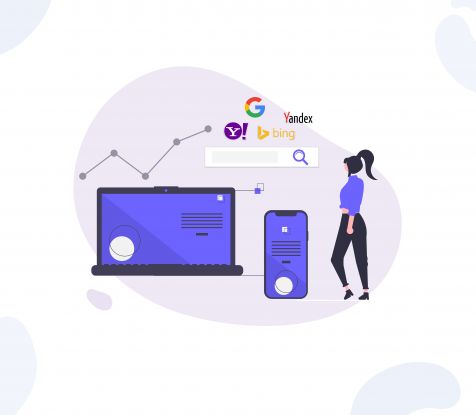Prarthana Varma talks about Online Marketing
What Affects Your SEO Score And How Can You Improve It In 3 Steps
Oct 07, 2022
When a user searches for a keyword relevant to your website, your website must be accessible and optimised. But how d...
Sep 27, 2016
by Prarthana Varma

Consumers use and switch between different devices depending on the environment they’re in and the situation at hand. Marketers can utilise this trend to deliver a tailored experience to the user. Cross-device marketing has become a vital part of a brand’s marketing strategy as research shows that more than 60% of the British population uses multiple devices when making a purchase. According to a report from Ninthdecimal, cross-device marketing is more effective (60% more) than desktop-only strategies. All this only serves to show what we know as users of technology instinctively: that mobile devices like phones and tablets have come to occupy an important space in marketing because they allow consumers to interact directly with the media.
So how exactly does cross-device marketing work? For this, we need to find a way of identifying users uniquely across multiple devices. Some of the devices used might be common with other users. These issues are problematic and render targeted marketing difficult and ineffective.
A more efficient method of attribution for cross-device conversions as a part of estimated total conversions in AdWords has been provided by Google’s DoubleClick. Reports from DoubleClick have shown marketers to witness a 16% increase in conversions post the changes in tracking. These conversions were happening even before except the weren’t being tracked. The UserID feature on Google Analytics enables you to view and analyse the engagement coming in from multiple devices and new sessions with unique ids. You can associate any clicks, website navigation, or engagement of a particular session with a unique User ID and use Analytics to study consumer behaviour.
Multi-device attribution help understand the consumer journey better. It helps in providing answers to questions like where did the consumer spend most of his time doing research, which device did he use to make shortlist the products, and which device did he use to make the payment? With better data, marketers can focus on the real target audience and eliminate false positives, thereby maximising returns on their investment. The most important thing is to first formulate an objective that helps in clarifying, formulating, and adapting strategies for different platforms. Different types of devices are also conducive to different types of marketing, based on size, portability, and usage patterns and it is important to keep these factors in mind. For example, prioritising phones over television can be effective because consumers tend to be more engaged with their mobile devices versus passively listening to the TV.
Multi-device marketing is certainly proving to be a game-changer, especially in terms of scalability of a campaign. However, no matter how good a strategy is, what matters above all is content that can engage the audiences. For this, it is important to keep reformulating the message across different platforms, rather than using the same copy across different devices. And of course, tracking which strategies work and which don’t, aids in adapting to the fast-changing world of cross-device marketing.


Prarthana Varma talks about Online Marketing
Oct 07, 2022
When a user searches for a keyword relevant to your website, your website must be accessible and optimised. But how d...


Prarthana Varma talks about Online Marketing
Jan 12, 2021
Is it really possible to share one - just one - infallible tip with regard to creating great digital marketing solutions? Not really.